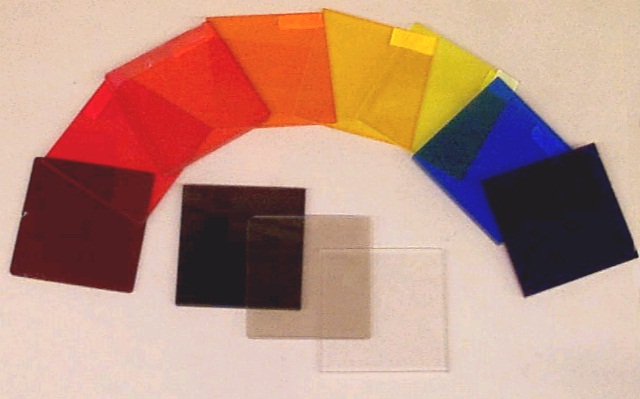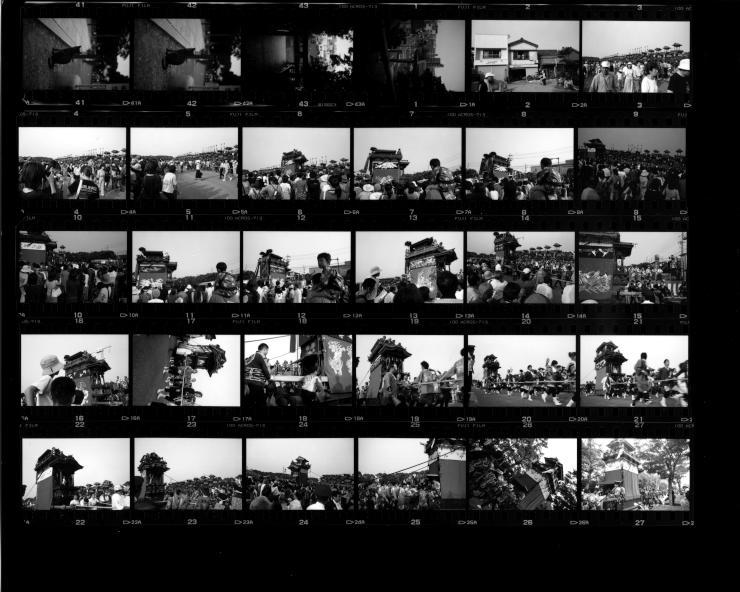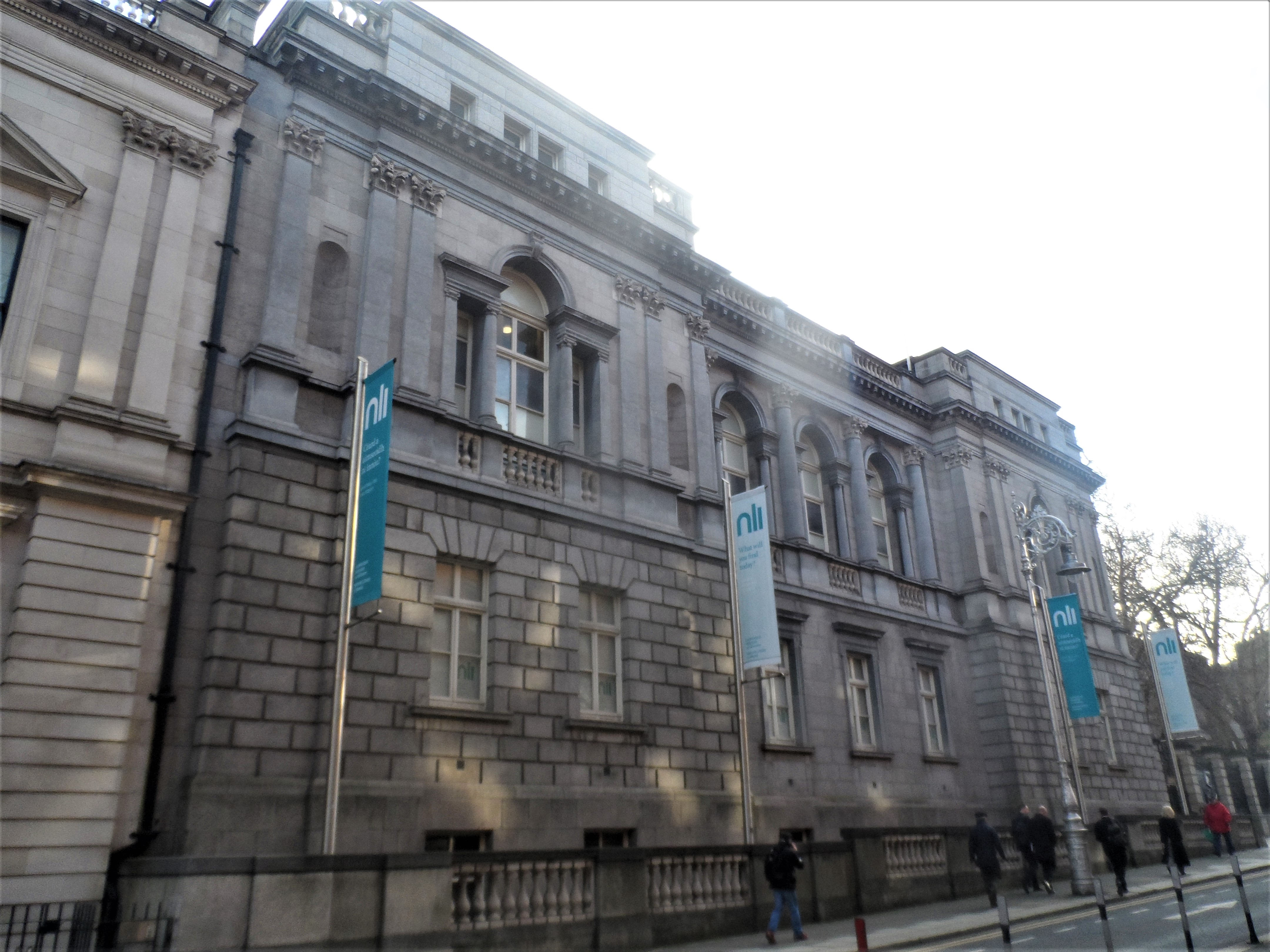|
Joly Colour Screen
The Joly colour process is an early additive colour photography process devised by Dublin physicist John Joly in 1894. Description Based on a method proposed in 1869 by Louis Ducos du Hauron in ''Les Couleurs en Photographie – Solution du Probleme'', the Joly colour process used a glass photographic plate with fine vertical red, green and blue lines less than 0.1 mm wide printed on them. The plate acted as a series of very fine filters, in a similar way to the later Paget process. To take a photograph, the filter screen was placed in the camera in front of an orthochromatic photographic plate, so that the light passed through the filter before striking the emulsion. After exposure, the plate was processed and contact-printed on another plate to make a positive black-and-white transparency. This was then placed in register with a viewing screen of the same type as used for exposure, to produce a limited-colour transparency that could be viewed by transmitted light. The Joly ... [...More Info...] [...Related Items...] OR: [Wikipedia] [Google] [Baidu] |
Additive Color
Additive color or additive mixing is a property of a color model that predicts the appearance of colors made by coincident component lights, i.e. the perceived color can be predicted by summing the numeric representations of the component colors. Modern formulations of Grassmann's laws describe the additivity in the color perception of light mixtures in terms of algebraic equations. Additive color predicts perception and not any sort of change in the photons of light themselves. These predictions are only applicable in the limited scope of color matching experiments where viewers match small patches of uniform color isolated against a grey or black background. Additive color models are applied in the design and testing of electronic displays that are used to render realistic images containing diverse sets of color using phosphors that emit light of a limited set of primary colors. Examination with a sufficiently powerful magnifying lens will reveal that each pixel in CRT, L ... [...More Info...] [...Related Items...] OR: [Wikipedia] [Google] [Baidu] |
Color Photography
Color photography is photography that uses media capable of capturing and reproducing colors. By contrast, black-and-white or gray-monochrome photography records only a single channel of luminance (brightness) and uses media capable only of showing shades of gray. In color photography, electronic sensors or light-sensitive chemicals record color information at the time of exposure. This is usually done by analyzing the spectrum of colors into three channels of information, one dominated by red, another by green and the third by blue, in imitation of the way the normal human eye senses color. The recorded information is then used to reproduce the original colors by mixing various proportions of red, green and blue light ( RGB color, used by video displays, digital projectors and some historical photographic processes), or by using dyes or pigments to remove various proportions of the red, green and blue which are present in white light ( CMY color, used for prints on paper a ... [...More Info...] [...Related Items...] OR: [Wikipedia] [Google] [Baidu] |
Dublin
Dublin (; , or ) is the capital and largest city of Republic of Ireland, Ireland. On a bay at the mouth of the River Liffey, it is in the Provinces of Ireland, province of Leinster, bordered on the south by the Dublin Mountains, a part of the Wicklow Mountains range. At the 2016 census of Ireland, 2016 census it had a population of 1,173,179, while the preliminary results of the 2022 census of Ireland, 2022 census recorded that County Dublin as a whole had a population of 1,450,701, and that the population of the Greater Dublin Area was over 2 million, or roughly 40% of the Republic of Ireland's total population. A settlement was established in the area by the Gaels during or before the 7th century, followed by the Vikings. As the Kings of Dublin, Kingdom of Dublin grew, it became Ireland's principal settlement by the 12th century Anglo-Norman invasion of Ireland. The city expanded rapidly from the 17th century and was briefly the second largest in the British Empire and sixt ... [...More Info...] [...Related Items...] OR: [Wikipedia] [Google] [Baidu] |
John Joly
John Joly FRS (1 November 1857 – 8 December 1933) was an Irish physicist and professor of geology at the University of Dublin, known for his development of radiotherapy in the treatment of cancer. He is also known for developing techniques to more accurately estimate the age of a geological period, based on radioactive elements present in minerals, the uranium–thorium dating.Obituary, Irish Times, 16 December 1933, page 1 Career Joly was born in Holywood House (the Church of Ireland Rectory), Bracknagh, County Offaly, Ireland. He was a second cousin of Charles Jasper Joly, the astronomer. He entered Trinity College, Dublin in 1876, graduating in Engineering in 1882 in first place with several special certificates in branches of engineering, at the same time obtaining a First Class Honours in modern literature. He worked as a demonstrator in Trinity's Engineering and Physics departments before succeeding William Johnson Sollas in the Chair of Geology and Mineralogy in 1897, a ... [...More Info...] [...Related Items...] OR: [Wikipedia] [Google] [Baidu] |
Louis Ducos Du Hauron , names sometimes translated to English as "Louis"
{{disambiguation ...
Louis may refer to: * Louis (coin) * Louis (given name), origin and several individuals with this name * Louis (surname) * Louis (singer), Serbian singer * HMS ''Louis'', two ships of the Royal Navy See also Derived or associated terms * Lewis (other) * Louie (other) * Luis (other) * Louise (other) * Louisville (other) * Louis Cruise Lines * Louis dressing, for salad * Louis Quinze, design style Associated names * * Chlodwig, the origin of the name Ludwig, which is translated to English as "Louis" * Ladislav and László - names sometimes erroneously associated with "Louis" * Ludovic, Ludwig, Ludwick, Ludwik Ludwik () is a Polish given name. Notable people with the name include: * Ludwik Czyżewski, Polish WWII general * Ludwik Fleck (1896–1961), Polish medical doctor and biologist * Ludwik Gintel (1899–1973), Polish-Israeli Olympic soccer player ... [...More Info...] [...Related Items...] OR: [Wikipedia] [Google] [Baidu] |
Photographic Plate
Photographic plates preceded photographic film as a capture medium in photography, and were still used in some communities up until the late 20th century. The light-sensitive emulsion of silver salts was coated on a glass plate, typically thinner than common window glass. History Glass plates were far superior to film for research-quality imaging because they were stable and less likely to bend or distort, especially in large-format frames for wide-field imaging. Early plates used the wet collodion process. The wet plate process was replaced late in the 19th century by gelatin dry plates. A view camera nicknamed "The Mammoth" weighing was built by George R. Lawrence in 1899, specifically to photograph "The Alton Limited" train owned by the Chicago & Alton Railway. It took photographs on glass plates measuring × . Glass plate photographic material largely faded from the consumer market in the early years of the 20th century, as more convenient and less fragile fil ... [...More Info...] [...Related Items...] OR: [Wikipedia] [Google] [Baidu] |
RGB Color Model
The RGB color model is an additive color model in which the red, green and blue primary colors of light are added together in various ways to reproduce a broad array of colors. The name of the model comes from the initials of the three additive primary colors, red, green, and blue. The main purpose of the RGB color model is for the sensing, representation, and display of images in electronic systems, such as televisions and computers, though it has also been used in conventional photography. Before the electronic age, the RGB color model already had a solid theory behind it, based in human perception of colors. RGB is a ''device-dependent'' color model: different devices detect or reproduce a given RGB value differently, since the color elements (such as phosphors or dyes) and their response to the individual red, green, and blue levels vary from manufacturer to manufacturer, or even in the same device over time. Thus an RGB value does not define the same ''color'' across d ... [...More Info...] [...Related Items...] OR: [Wikipedia] [Google] [Baidu] |
Filter (optics)
An optical filter is a device that selectively transmits light of different wavelengths, usually implemented as a glass plane or plastic device in the optical path, which are either dyed in the bulk or have interference coatings. The optical properties of filters are completely described by their frequency response, which specifies how the magnitude and phase of each frequency component of an incoming signal is modified by the filter. Filters mostly belong to one of two categories. The simplest, physically, is the absorptive filter; then there are interference or dichroic filters. Many optical filters are used for optical imaging and are manufactured to be transparent; some used for light sources can be translucent. Optical filters selectively transmit light in a particular range of wavelengths, that is, colours, while absorbing the remainder. They can usually pass long wavelengths only (longpass), short wavelengths only (shortpass), or a band of wavelengths, blocking both l ... [...More Info...] [...Related Items...] OR: [Wikipedia] [Google] [Baidu] |
Paget Process
The Paget process was an early colour photography process patented in Britain in 1912 by G.S. Whitfield and first marketed by the Paget Prize Plate Company in 1913. A paper-based Paget process was also briefly sold. Both were discontinued in the early 1920s. One of the most outstanding exponents of the Paget process was Australian photographer Frank Hurley. Photography The system used two glass plates, one of which was the colour screen plate while the other was a standard black-and-white negative plate. The colour screen plate comprised a series of red, green and blue filters, laid down in a regular pattern of lines to form a ''réseau'', or matrix. Because the negatives of the time required long exposure times, the colours in the screen plate were diluted to let more light through to the negative, resulting in a quicker exposure. A viewing screen with more intense colour filters was used in combination with the developed positive to project a composite colour image. The col ... [...More Info...] [...Related Items...] OR: [Wikipedia] [Google] [Baidu] |
Orthochromatic
In chemistry, orthochromasia is the property of a dye or stain to not change color on binding to a target, as opposed to metachromatic stains, which change color. The word is derived from the Greek '' orthos'' (correct, upright), and chromatic (color). Toluidine blue is an example of a partially orthochromatic dye, as it stains nucleic acids by its orthochromatic color (blue), but stains mast cell granules in its metachromatic color (red). In spectral terms, orthochromasia refers to maintaining the position of spectral peaks, while metachromasia refers to a shift in wavelength, becoming either shorter or longer. In photography, an orthochromatic light spectrum is one devoid of red light. In biology, orthochromatic refers to the greyish staining because of acidophilic and basophilic mixture in the cell. Orthochromatic photography Orthochromatic photography refers to a photographic emulsion that is sensitive to only blue and green light, and thus can be processed with a red ... [...More Info...] [...Related Items...] OR: [Wikipedia] [Google] [Baidu] |
Contact Print
A contact print is a photographic image produced from film; sometimes from a film negative, and sometimes from a film positive or paper negative. In a darkroom an exposed and developed piece of film or photographic paper is placed emulsion side down, in contact with a piece of photographic paper, light is briefly shone through the negative or paper and then the paper is developed to reveal the final print. The defining characteristic of a contact print is that the resulting print is the same size as the original, rather than having been projected through an enlarger. Basic tools Contact printing is a simple and inexpensive process. Its simplicity avails itself to those who may want to try darkroom processing without buying an enlarger. One or more negatives are placed on a sheet of photographic paper which is briefly exposed to a light source. The light may come from a low wattage frosted bulb hanging above an easel which holds them together, or contained in an exposure ... [...More Info...] [...Related Items...] OR: [Wikipedia] [Google] [Baidu] |
National Library Of Ireland
The National Library of Ireland (NLI; ga, Leabharlann Náisiúnta na hÉireann) is the Republic of Ireland's national library located in Dublin, in a building designed by Thomas Newenham Deane. The mission of the National Library of Ireland is 'To collect, preserve, promote and make accessible the documentary and intellectual record of the life of Ireland and to contribute to the provision of access to the larger universe of recorded knowledge.' The library is a reference library and, as such, does not lend. It has a large quantity of Irish and Irish-related material which can be consulted without charge; this includes books, maps, manuscripts, music, newspapers, periodicals and photographs. Included in their collections is material issued by private as well as government publishers. The Chief Herald of Ireland and National Photographic Archive are attached to the library. The library holds Art exhibition, exhibitions and holds an archive of List of Irish newspapers, Irish ne ... [...More Info...] [...Related Items...] OR: [Wikipedia] [Google] [Baidu] |






.jpg)

